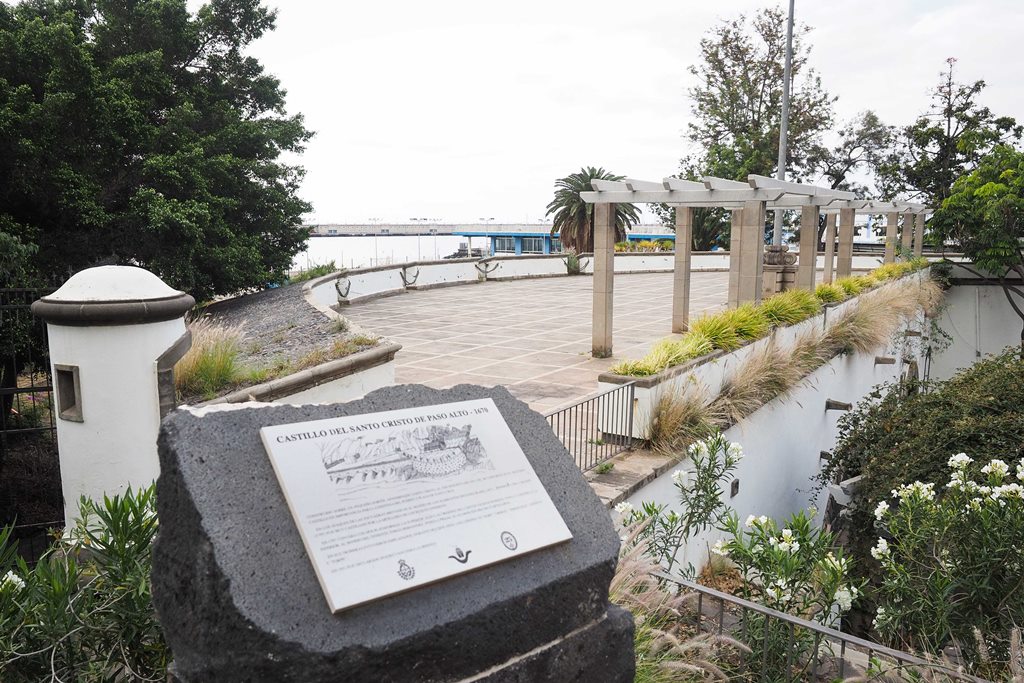
The announcement of City Hall of Santa Cruz that the State has been asked to transfer the Castillo de Paso Alto to dedicate it to the Gesta of July 25, and turn it into the headquarters of the Historical-Cultural Association that commemorates this historical moment, has made the Tenerife Historical Memory Association Remember that, at that point, a military prison was located in 1936, where hundreds of people from Tenerife were imprisoned, including the last Republican mayor of Santa Cruz, José Carlos Schwartz, and grandfather of the president of the association, Mercedes Pérez Schwartz.
“It seems to us a good idea that this space be rescued for Santa Cruz, but we also believe that it cannot be forgotten that many people were locked up in that place, like my grandfather, but also other authorities, the military and people of a certain social influence. ”, points out Pérez Schwartz.
The president of the AMHT believes that it is necessary to remember that the Castillo de Paso Alto was a point of repression as was Fyfees in the capital, and she has sent it to the Santa Cruz City Council so that they can assess this possibility, claiming that the space is shared, so that it can be dedicated to the Gesta of July 25, but also to remember what happened there.
From the City Council it is explained that it has not yet been decided whether the space of the Paso Alto Castle will be dedicated entirely to the Gesta of July 25, and that, in any case, some type of reminder could be placed, such as a plaque, that point out what happened in that space during the first months of the Spanish Civil War.
For the AMHT, although they value the provision of the Consistory, a plaque is not enough, they demand that part of the space be allocated to house a place of memory, because, as Pérez Schwartz recalls, “in Santa Cruz there is no longer any place that it was used as prisons, except for Paso Alto. From Fyffes there is only one sculpture that remembers him, ”he points out.
Paso Alto Castle was fundamental in the defense of Santa Cruz from Nelson’s attack, but it is also undeniable, as the AMHT defends, that it became a point of repression, in which, in addition to José Carlos Schwartz, the civil governor of the time, and other politicians and different defenders of the democratic order, who ended up in that prison. Hundreds of residents of Santa Cruz ended up in Paso Alto, and for some, as was the case of the last Republican mayor of the capital, it was the last point in which he was seen alive, from there he disappeared to be executed.
This same week Yes, you can remember that already in 2018 a motion was brought to the Plenary of Santa Cruz to convert the castle of Paso Alto into a museum on historical memory. The formation shares the arguments of the Association of Historical Memory, recalling that this space has an enormous symbolic value, because it is the only building that remains standing in Santa Cruz among all those spaces that were used to imprison political prisoners, in the first place, the coup plotters against the Second Republic and, later, the Franco regime. The spokesperson for Sí se puede, Pedro Fernández Arcila, defends that “it is about transforming this building with so much symbolic charge into a space for linking democratic values and a commitment to respect human rights.”
the other prisons
According to the data of the time collected by different historians, as a result of the 1936 coup there were thousands of arrests that quickly saturated the Provincial Prison, which was in Santa Cruz de Tenerife, on Calle San Miguel. So the old Cavalry barracks was converted to house more detainees, as well as the Paso Alto barracks. Also, the port of the capital would have five ships used as prisons. The Santa Rosa de Lima and the Santa Elena were the largest and accommodated 150 prisoners each. El Gomera and El Adeje had 100 detainees and, later, Porto Pi was incorporated. However, the most important detention center in the city was located in the warehouses of the English company Fyffes, which held 1,500 people in its three warehouses.
















